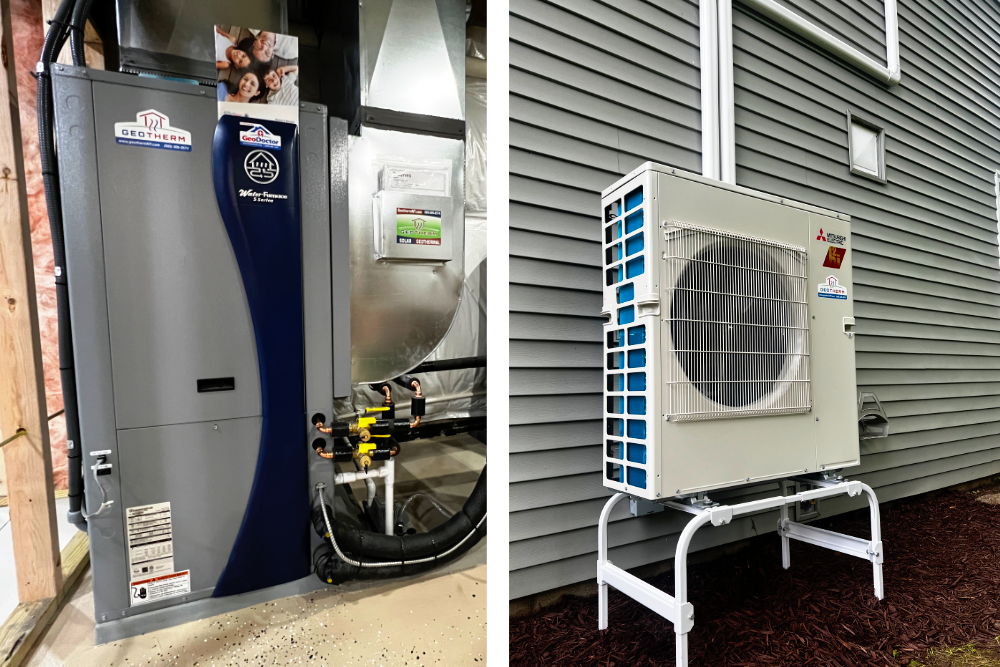First, we’ll review the pros and cons of monocrystalline solar cells vs polycrystalline solar cells. Then, we’ll let you decide: Which would you want for your residential power plant?

Monocrystalline Silicon Solar Cells
Solar cells made of monocrystalline silicon are black and very uniform in appearance, which is an indication of their high purity.
Pros:
- Monocrystalline solar panels have the highest efficiency rates, typically in the 15-20% range.
- This high efficiency rate means they produce more power per square foot, and are therefore very space-efficient.
- Monocrystalline solar panels tend to be more efficient in warm weather. Performance suffers somewhat as temperature goes up, but less so than with polycrystalline solar panels.
- Since they are monocrystalline and perform better in heat these panels are projected to have the longest life. Most come with a 25-year warranty but will probably last substantially longer than 25 years.
- They perform better than similarly rated polycrystalline solar panels at low-light conditions.
- Many people find their uniformity and black color more aesthetically pleasing than the blue color and sometimes variegated pattern of the polycrystalline panels.
Cons:
- Monocrystalline solar panels cost more than polycrystalline panels. See below for a cost comparison.
Polycrystalline Silicon Solar Cells
The first solar panels based on polycrystalline silicon were introduced to the market in 1981. These panels are blue and sometimes have a variegated pattern.
Pros:
- The process used to make polycrystalline silicon is simpler and costs less.
Cons:
- Polycrystalline panels have lower efficiency rates typically in the 13-16% range. Monocrystalline panels have higher efficiencies in the range of 15-20%.
- Because of the lower efficiency rate they are not as space-efficient since they produce less power per square foot.
- Polycrystalline panels tend to have lower heat tolerance than monocrystalline solar panels and perform slightly worse than monocrystalline solar panels in high temperatures.
- Heat can affect not only the performance of polycrystalline solar panels and but is projected to substantially shorten their lifespan.
- These panels are also less efficient in low-light condition.
- Polycrystalline panels then to be less aesthetically pleasing since they have a non-uniform look and sometimes a speckled blue color.
Cost Comparison
We’ll compare on as equal a basis as possible using the following solar panels available on the AltE store website:
- SolarWorld SunModule 260W (poly) = $196 per panel
- SolarWorld SunModule 285W (mono) = $249 per panel
To normalize for wattage, multiply $196 times 285W and divide by 260W. Therefore, the adjusted cost difference is $215 per panel for poly vs. $249 per panel for mono. For an average 2,000 SF house that uses 7,500 kwHr annually, the required 18 monocrystalline panels would cost $612 more than the less efficient, shorter-lived poly panels.

A Caveat on Warranties
Most solar panels on today’s market come with a 25-year warranty (performance guarantee). This generally means a guaranteed electrical production for 10 years at 90% of rated power output and 25 years at 80%. But be advised that all performance guarantees are not the same.Be sure to check the small print on the warranties for the panels you’re considering.
Of course we don’t have data on the performance of solar panels 30-40 years down the line but the projection is that monocrystalline panels (based on purity and the other characteristics mentioned above) will keep generating a significant amount of electricity and bring in savings for many years after the warranty expires and will ultimately stand the test of time far better than polycrystalline panels.
Is it more than just polycrystalline solar cells vs monocrystalline solar cells? Thin-film solar cells also exist, but their prevalence in the residential market is so limited at this time that we don’t consider them a viable option in this comparison.







